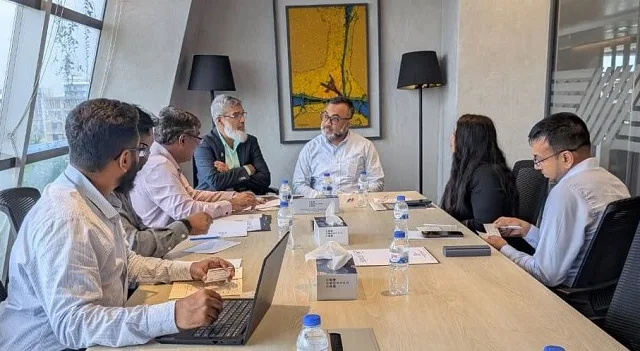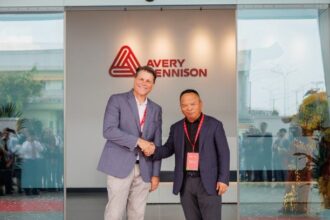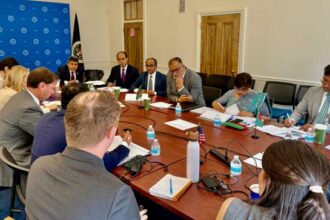A high-level delegation from the Society of Dyers and Colourists (SDC), a venerable UK-based institution in the field of colour science, visited the Bangladesh Garment Manufacturers and Exporters Association (BGMEA) on September 28, underscoring a growing confluence of interests in sustainability, innovation and workforce development in Bangladesh’s textile sector.
Founded in 1884 and granted a Royal Charter in 1963, SDC is widely respected for its contributions to colour education, dyeing science, technical research and professional accreditation. As a registered charity, it runs courses up to degree level and organizes regional and online programmes abroad.
During their visit, the SDC delegation met with BGMEA Vice President (Finance) Mijanur Rahman and BGMEA Director Mohammed Sohel. The talks ranged over several strategic themes, including SDC’s repository of knowledge on dyes, the prospects of nature-based dyeing, and the accelerating need to integrate artificial intelligence into textile dyeing operations. A central thread was the requirement to develop a skilled workforce capable of operating in AI-enabled production systems. The delegation also emphasised exploring Bangladesh’s indigenous natural resources as a pathway to reducing reliance on synthetic dyes and mitigating environmental burdens.
Vice President Rahman affirmed that to remain competitive globally, Bangladesh’s garment industry must embrace AI-driven efficiency, while aligning with BGMEA’s overarching vision of sustainable growth. Director Sohel echoed that sentiment, stating that collaborative efforts of this type could be transformative for shaping a more circular, eco-conscious trajectory for the country’s ready-made garments (RMG) sector.
Also Read: Bangladesh Advances on Global Circular Fashion Path with Netherlands Trade Mission
Observers note that Bangladesh, as one of the world’s leading apparel exporters, has come under increasing pressure from buyers and global regulatory regimes to adopt greener production practices. The country’s dyeing and finishing sub-sector is one of the most pollution-intensive links in the supply chain, with effluent discharge, chemical use, water intensity and carbon emissions all drawing scrutiny. Many industry players are seeking shift toward cleaner chemistry, closed-loop processes and bio-based alternatives.
In that context, the SDC delegation’s visit is timely. By leveraging SDC’s technical expertise in colour science, Bangladesh’s industry may benefit from capacity building, new curricula, joint research projects, and pilot implementations of AI-assisted dyeing systems. Stakeholders expect that strong buy-in from BGMEA could help scale such models across many factories in the country.
However, challenges remain. Transitioning to nature-based dyes at industrial scale can be fraught with issues of consistency, supply of raw botanical sources, color fastness, cost, and integration with existing infrastructure. Similarly, adoption of AI in dyeing will demand significant investment, data infrastructure, upskilling of operators, and a shift in mindset. It will also require collaboration across academia, industry and government.
BGMEA, which represents thousands of garment manufacturers and exporters, has in recent years pushed sustainability, compliance and green factory programmes as part of its strategy to maintain market access in Europe, North America and other export destinations. The association operates in a challenging global environment marked by rising energy costs, intensifying environmental regulation, and competition from lower-cost producers.
The SDC visit signals a more proactive posture by the Bangladeshi textile community to deepen technical partnerships, especially in areas at the intersection of sustainability and technology. Whether those partnerships translate into widespread adoption remains to be seen, but for now the dialogue appears constructive — and potentially consequential for the future direction of Bangladesh’s textile dyeing ecosystem.









